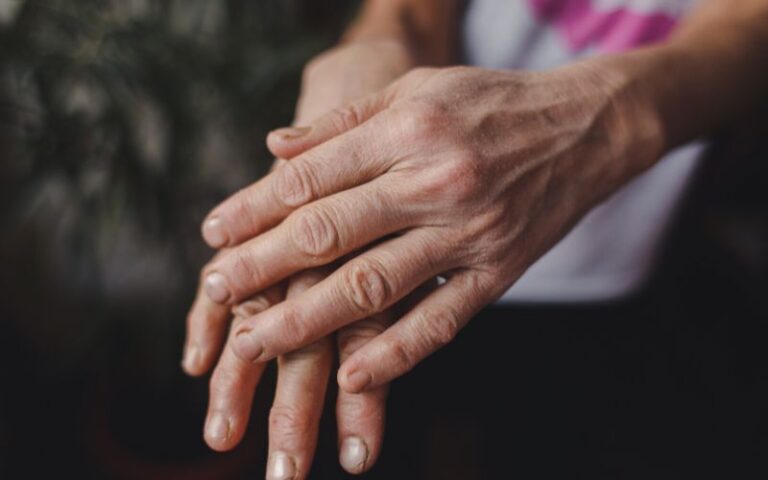Tired of Dry, Scaly Skin On Legs: 8 Simple Ways to Palliate

We might often wonder what causes dry, thin scales or patches on our skin, often occurring on the legs, despite taking adequate measures to maintain nourished skin. Various reasons, from dehydration to medical conditions, can cause dry flakes, which we can’t always avoid. On the other hand, you can treat them with the appropriate techniques and treatments tailored to your skin’s unique requirements.
Here are a few remedies for dry legs, along with guidance and pointers on coping with the signs and restoring the appearance and health of your dry leg skin.
What Causes Dry, Scaly Skin On Your Legs?
Dry skin usually occurs due to the dead skin cell layer called the stratum corneum. The stratum corneum is generally thicker on your legs than in other parts, which is why you might often see scales or flakes of the thin epidermis.
Dry, scaly skin can appear on the legs due to various factors, from skin dehydration to underlying medical conditions. Scented lotions (alcohol-based), hot showers, and even travel to distant places can cause your skin to dry out.
Generally, you may witness more dryness and scales on your skin during the winter months. It is because the shedding of the dead skin cells slows down during the cold weather and produces fewer skin surface oils that hydrate the skin. Hence, we see snakeskin or alligator skin during the winter months.
What Can You Do To Relieve It?
Just by incorporating a few simple things into your daily routine, you may be able to relieve your leg of dry skin.
1. Gently Exfoliate Your Legs
Much like your face, there may also be a buildup of dead skin cells, oil, debris, and sweat on your legs. Due to this buildup, your skin becomes harsh to the touch and looks dingy. Exfoliating your legs is the first thing you should do.
Exfoliation is scraping away dead skin and grime from our bodies. Manually removing the old skin by using a product with a gritty texture, typically salt or sugar granules, can get your legs to look softer and smoother.
You may also apply a body scrub to your legs, knees, and thighs while in the shower. Your skin will get softer by doing this at least once a week. It will also aid in improving blood circulation and balancing your uneven tone.
2. Constantly Moisturize
Moisturizer is the second crucial thing that will move you one step closer to having soft, smooth legs. Every single day, it’s critical to moisturize your entire body, but your legs need more care, particularly in cold seasons.
Moisturize your legs morning and night to maximize benefits because doing so will keep your skin hydrated all day. The optimum time to apply lotion is while your skin is still damp. It will help the moisture be retained and work significantly effectively.
Shea butter is a crucial ingredient to search for when buying a moisturizer since it will help you attain smoother, softer, and more hydrated skin.
You can unwind by using perfumed body creams before bed.
3. Essential Oils Can Help, Too
Our skin benefits greatly from oils. Some of the greatest oils for our skin include coconut oil, olive oil, sweet almond oil, and jojoba oil. These oils provide a barrier between our skin and the environment to prevent moisture loss.
Apply your favorite natural body oil liberally right after you apply your moisturizer to lock it in and give your skin an extra layer of care and hydration each night. Your legs will be soft and smooth in no time if you incorporate this into your nighttime regimen.
4. Shave Your Legs Cautiously; Use Moisturizing Gel
Waxing or dry shaving can also cause dry skin. Many of us grab for the razor to shave our legs as this is quick and easy. Whichever method you use may strip off the skin’s natural oils and cause abrasions on your skin. Using a clean, sharp razor and shaving foam or gel may reduce friction.
Another piece of advice is to always exfoliate your legs before shaving and always shave in the direction of hair growth. These habits stop hair from getting stuck in the follicles, causing strawberry legs or folliculitis. Finally, moisturize your legs immediately to seal moisture and lessen friction.
Tip: Constantly shaving your legs multiple times a week will leave your skin feeling dry and rough. Instead, opt out of waxing every couple of weeks. It is a lot better for your skin and will also help slow down the hair growth on your legs.
5. Protect Your Skin With SPF
Your body’s skin progressively ages due to UV damage, including wrinkles, sunburn, sagging skin, pigmentation, and uneven skin tone. So be sure to cover your body, including your hands and legs, with broad-spectrum sunscreen.
6. Hydrating Yourself
Staying hydrated is the final and most crucial step to having soft and supple legs. You will see it on your skin if you don’t drink enough water during the day. Your legs will appear parched, flaky, scratchy, and dry. By increasing your water consumption (consuming about 6 to 8 glasses of water, including fruit juices, each day), you will quickly start to notice a significant improvement in the texture, appearance, and feel of your legs.
Other Things That May Also Help With Relieving Dry, Scaly Skin
7. Dry Brush Or Buff Puff Your Legs
Dry brushing daily will improve blood circulation throughout your body and help remove any dry, rough skin cells adhering to the surface of your legs. Although dry brushing stimulates blood flow, which is beneficial, its main objective is stimulating collagen production, which will assist in thickening the skin and reduce the appearance of fat cells.
Tip:
- Sweep the skin brush upwards before getting in the shower.
- Brush upward toward the heart, beginning at the top of your feet. You will feel warmer after dry brushing since it immediately stimulates circulation.
- Avoid pressing too firmly; it should feel lively but not agonizing.
You can also use a body buff puff. An exfoliating buff puff works similarly to a dry brush to remove dead skin cells and reveal softer, more radiant skin. Try using it to prepare your skin when shaving or heading outside in the sun.
8. Cooling Spray For Itching
The cooling spray relieves itching, rejuvenates weary legs, and increases blood circulation. Sunflower and wheat germ oils are the ideal finishing solution for even the driest legs.
Moreover, since it’s a spray, there’s hardly any mess. It’s ideal for spraying whenever you require a rapid and dependable dosage of hydration.
Steering Towards Smooth, Supple Legs
Along with the advice listed above, changing a few aspects of your diet can also help your skin look better. Adequate water consumption will assist your body stay hydrated, remove toxins, and nourish and hydrate your skin. Consume meals high in vitamin C, Omega-3 fatty acids, and Omega-6 fatty acids to keep your skin glowing and bright all year.
FAQs
Q: What are the ingredients to look for in a moisturizer for dry skin on the legs?
A: Look for ingredients such as glycerin, shea butter, and hyaluronic acid. Those can help retain moisture in the skin.
Q: Is there any treatment for severely dry skin on the legs?
A: If you have severely dry skin on your legs, see a dermatologist immediately. After a proper diagnosis, they recommend a medicated cream or ointment. In some cases, they may also recommend light therapy or oral medications.
References
- Dealing with Dry, Itchy Skin on Legs: https://www.vaseline.com/content/brands/vaseline/master/en/home/articles/body-care/dealing-with-dry-itchy-skin-on-legs.html
- Dry Skin: https://www.mayoclinic.org/diseases-conditions/dry-skin/diagnosis-treatment/drc-20353891
- How to identify and treat scaling skin: https://www.medicalnewstoday.com/articles/323967
- Dry Skin on Legs: How to Find Relief: https://www.healthline.com/health/dry-skin-on-legs
- How to Remedy Dry, Flaky Skin on Your Legs: https://www.byrdie.com/how-to-get-rid-of-dry-skin-on-legs-4693433
- Ways To Get Smooth And Shiny Legs: https://irisgarden.lk/5-ways-to-get-smooth-and-shiny-legs/
- Tricks for the smoothest legs ever, according to skincare experts: https://www.vogue.in/beauty/content/best-skincare-tips-for-the-smoothest-legs-ever





